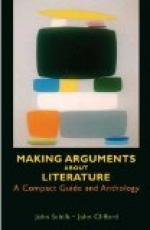In some cases it is obvious that the question of law is a question of policy, as in the so-called “political decisions” of the United States Supreme Court. Such were the decisions formulated by Chief Justice Marshall on constitutional questions, which made our government what it is. The difference between “the strict construction” of the Constitution and the “free construction” was due to a difference of temperament which has always tended to mark the two great political parties of the country. So with the Insular cases, which determined the status of the distant possessions of the United Stales, and which split the Supreme Court into so many pieces: the question whether the Constitution applied in all its fullness to Porto Rico and the Philippines was essentially a political question, though of the largest sort, and therefore a question of policy.
Finally, there are the arguments of policy which deal with matters of taste and aesthetic preference. The difficulty with these arguments is that they do deal with questions of taste, and so fall under the ancient and incontrovertible maxim, de gustibus non est disputandum. Artists of all varieties and some critics are given to talking as if preferences in color, in shape, in styles of music, were absolutely right and wrong, and as if they partook in some way of the nature of moral questions; but any one who has observed for even twenty years knows that what the architects of twenty years ago declared the only true style of art is now scoffed at by them and their successors as hopelessly false. The cavelike forms of the Byzantine or Romanesque which superseded the wooden Gothic have in turn given way to Renaissance classic in its various forms, which now in turn seem on the point of slipping into the rococo classical of the Ecole des Beaux Arts. In painting, the violent and spotty impressionism of twenty years ago is paling into the study of the cool and quiet lights of the Dutchmen of the great period.[3] And at each stage there are strenuous arguments that the ideas of that particular live years are the only hope for the preservation of the art concerned.
The essential difficulty with all such arguments is that the aesthetic interests to which they appeal are personal, and depend on personal preferences. Most of us in such matters, having no special knowledge, and liking some variety of differing styles, modestly give way to the authority of any one who makes a profession of the art. In the laying out of a park a landscape architect may prefer single trees and open spaces, where the neighbors and abutters prefer a grove. In the long run his taste is no better than theirs, though he may argue as if they were ignorant and uncultivated because they disagree with him. In all such cases, unless there is some consideration of practical expediency, such as letting the southwest wind blow through in summer, arguments can do little except to make and keep everybody angry. Their chief value is to make us see things which perhaps we had not thought of.




